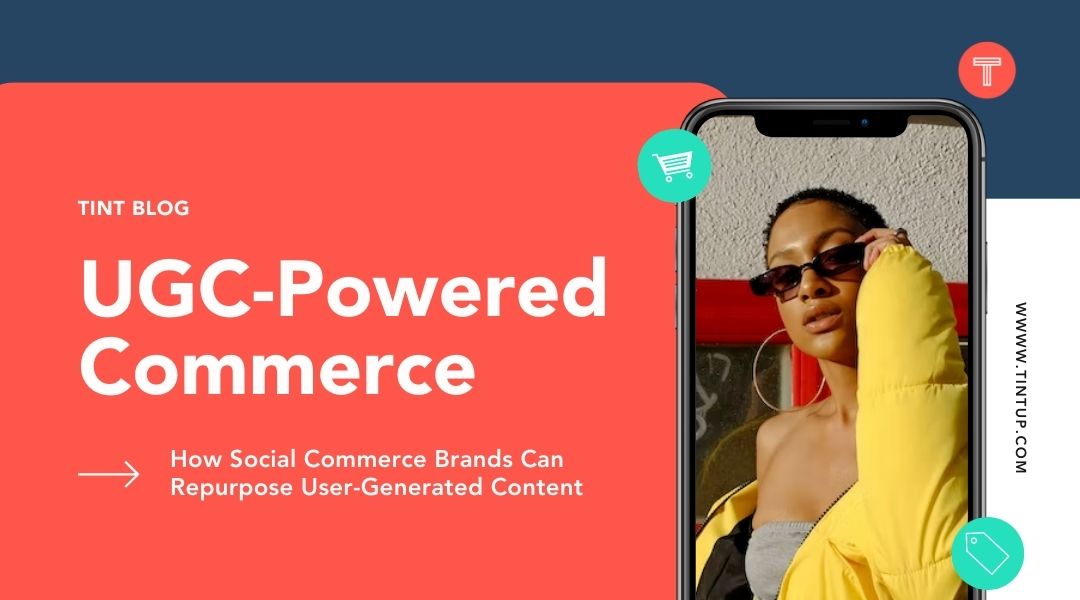Social commerce is taking over social media feeds – so much you may have noticed brands increasingly repurpose user-generated content.
It’s the new mom sharing her favorite crib mattress, an employee excitedly talking about their new promotion, or a travel influencer at a fancy hotel with #sponsored in their caption.
From professional influencers to people unknowingly partaking in social commerce—it’s the current state of social media. As it turns out, it’s exactly what people are looking for.
Eighty-one percent of buyers surveyed by Facebook first research a product on social media apps.
Using social commerce, brands are selling products and creating a better buying experience—and it’s paying off big.
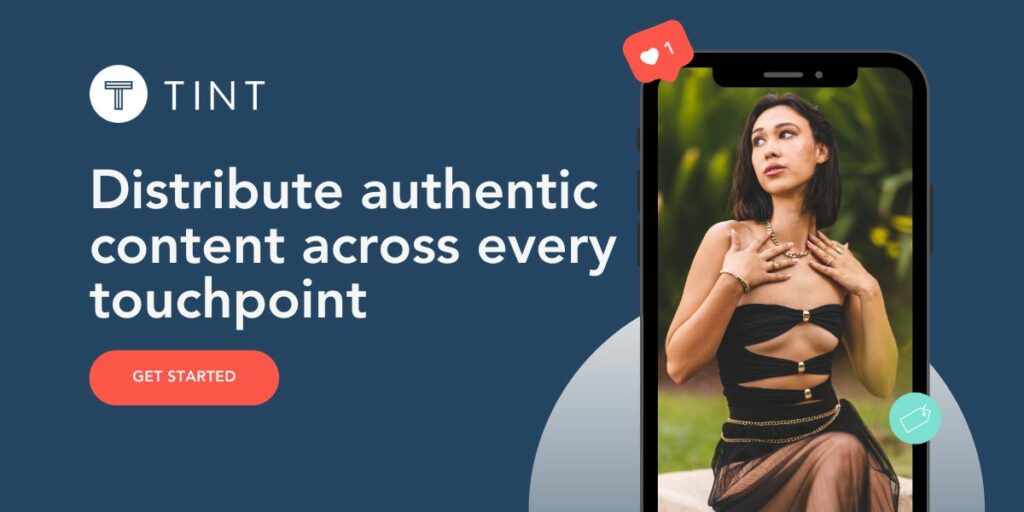
Why Does Social Commerce Work So Well?
Social commerce creates a new buying experience thanks to user-generated content.
People are far more aware of what to expect from a brand before they click “buy now” and they love their newfound intel. Sixty-two percent of consumers surveyed in our 2022 State of User-Generated Content Report said they are more likely to click on content like ads, websites, social posts, or emails, that feature customer photos rather than an image created by the brand.
User-generated content created a new way for brands to establish the know, like, and trust factors essential to success. Seventy-six percent of surveyed buyers have purchased a product because of someone else’s recommendation before. With UGC, brands are:
- Showing social proof
- Establishing value
- Building trust and credibility
Buyers are looking for customer opinions at the start of the buyer’s journey. Seventy-two percent of consumers believe that reviews and testimonials submitted by customers are more credible than the brand talking about their products. Social commerce creates a direct link between brands, UGC, and sales.
Social Commerce brands that aren’t leveraging the creator economy are missing out on a major opportunity to connect with consumers, gain their trust, and boost sales. More reviews and authentic content spread across multiple touchpoints create a better experience for buyers.
These interactions become high-value opportunities to show potential buyers your products in the wild—and your customers want to help you with content creation. Sixty percent of consumers wish that more brands would tell their fans and customers what type of content they want them to create and 72% of users will accept a brand’s request to use their content, meaning people are excited to participate when brands ask them for rights to repurpose their user-generated content.
Buyers are happy to create content for your brand. User-generated content outperforms brand-created content – and all you have to do is place it throughout your buyer’s journey to create a high-converting, more personalized shopping experience.
Here’s where to start.
Repurpose User-Generated Content Within the Shopping Journey
When you repurpose user-generated content into the buyer’s journey, brands can engage and influence potential customers at every stage of the process – from awareness to consideration to purchase.
Homepage
Salesforce found visitors spend 90% more time on websites with user-generated content galleries.
The buyers spending time on your homepage are people newly aware of your brand and potentially interested in your products. They’re scouting out anything that doesn’t align with what they’re looking for because of social doubt. They’re also looking for reasons why you’re the perfect fit thanks to social proof.
Here are different ways to share user-generated content on your homepage to show buyers you’re the brand for them:
- Share a UGC gallery of happy customers showing off your products in action and ask customers to share content for a chance to be featured
- Replace your stock photos with REAL customer images
- Feature customer reviews of your best-selling products
- Feature testimonials or a video of a customer story
Fable Home puts buyer testimonials in the third section of its homepage. Their above-the-fold section highlights a new collection (in collaboration with an influencer). The second section of their homepage has links to their varying products. The third section highlights positive buyer experiences, with full names, locations, and star ratings.
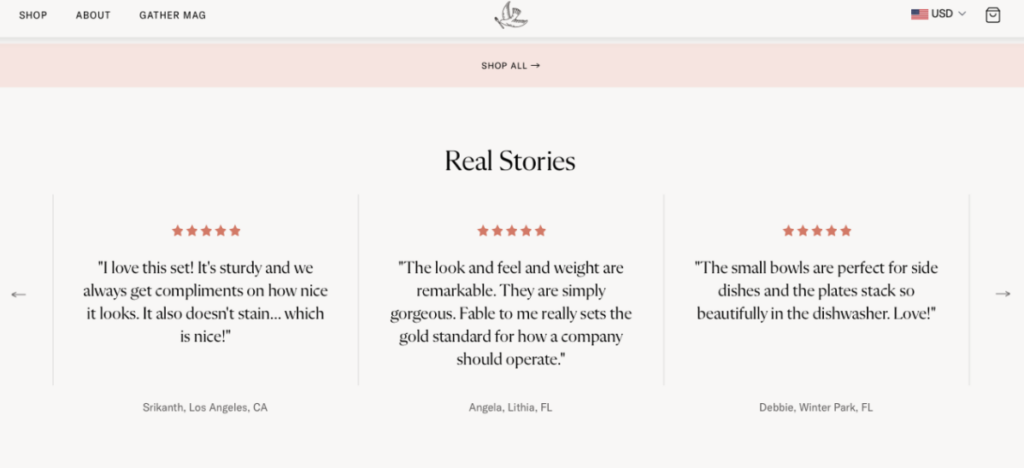
Product Pages
Seventy-two percent of consumers believe reviews and testimonials submitted by customers are more credible than the brand talking about their products.
Product pages need review sections to show that products will fulfill their promises. For example, clothing reviews that show a previous buyer’s height and clothing sizes make it easier for a similar buyer to feel confident making the purchase.
Here’s a quick start guide to adding user-generated content to product pages:
- Add a ratings & reviews section and let customers share visuals
- Mix in UGC-style visuals to show your product in real life
- Turn questions and answers into a FAQs section at the bottom of the product page
Ikea asks customers to rate products on a scale of 1-5 for variables like value for money and works as expected. This creates product pages filled with user-generated content that tells potential buyers exactly what to expect from purchasing this product.
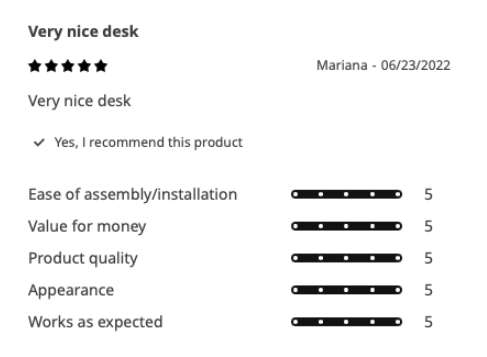
Checkout Pages
The average cart abandonment rate is nearly 70%, which means getting a buyer to click “Add to Cart” is far from the finish line.
Buyers need a final push to get excited about their purchase. When they’re checking out, their mind is looking for reasons why this would be a risky purchase (even if it’s a low price point). People are more attuned to risk than they are to gain—so this is the time to show them why buying from your brand is a risk-free experience.
Here’s how to add user-generated content to your checkout pages:
- Feature ratings and reviews while scrolling through their cart
- Add customer testimonials to your checkout page
- Showcase similar products a customer might like (with ratings and reviews) as an upsell opportunity!
At the bottom of Quince’s eCommerce checkout page is a reminder that the clothing brand was featured in Forbes (social proof) and customer reviews to scroll through. Each review showcases what the customer bought, has a few sentences about the product, and a 5-star rating.
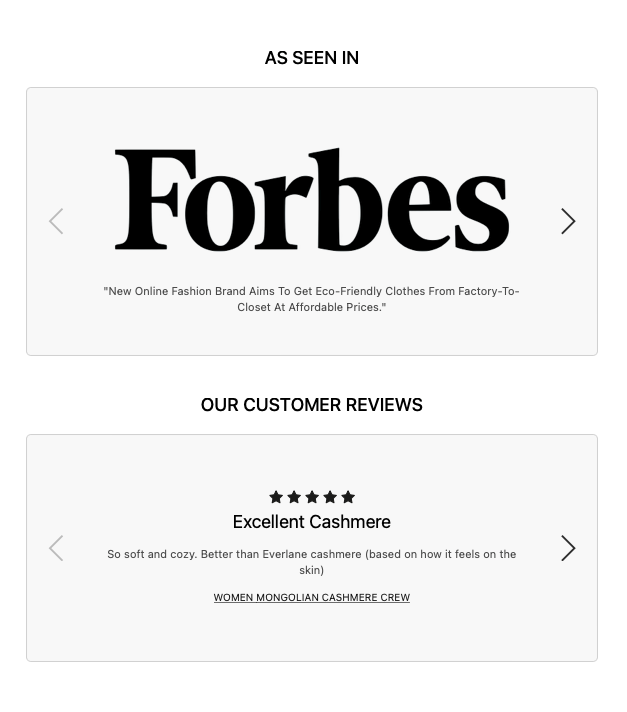
Social Media
Consumers are nearly 3x more likely to engage with a brand’s social media content than any other type of media they create (64% of consumers have tagged a brand or used a hashtag on social media before).
People want to interact with their favorite brands on social media, but they want a little guidance. Brands can’t expect their customers to figure out what content they’d like to repost. They need to show them or tell them.
To get user-generated content that you can repurpose on social channels:
- Add guidance in your bio (Tag #BRAND or @BRAND for a chance to be featured on our marketing channels)
- Ask for unboxing videos, product photos, or something more specific and unique. Share this on stories, feed, etc. Make them feel FOMO!
Chaco Footwear uses #ChacoNation to get its customers excited about creating user-generated content. They also run campaigns, like #FitForAdventure, asking creators, customers, and participants to use the hashtag to be featured on their social media. With these hashtags, Chaco can easily find user-generated content that they organize inside TINT.
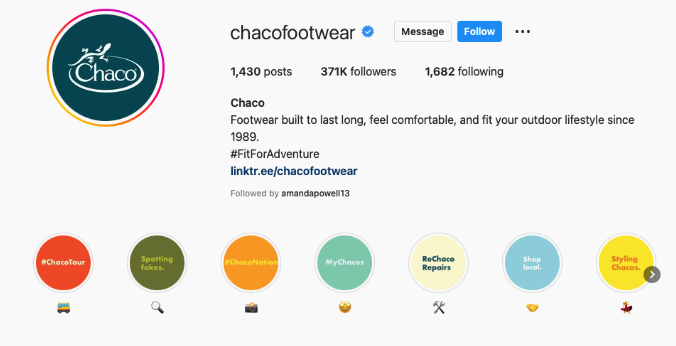
Social Ads
Using user-generated content in social media ads can reduce cost-per-click (CPC) by 50%.
User-generated content social ads that highlight customers see better engagement than brand-created content. These social ads feel more native to the platform while creating the social proof that drives clicks. Brands can either post UGC directly as a sponsored post or add UGC (like testimonials and reviews) to their social ads.
Here are a few best practices when it comes to UGC social ads:
- Use customer reviews and link directly to that product’s landing page
- Post UGC directly (automate content right management)
- Hire UGC Creators to make content for social ads
Shopify highlights customer reviews of their POS system. They add a testimonial to their social ad image and then explain who the customer is in their copy. Their link directs people to their Shopify POS landing page specifically designed to show merchants how their system benefits the merchant’s business.

When emails contain user-generated content, click-through rates increase by about 73% and produce more conversions.
Email is an important part of the buying journey because you’re nurturing the relationship with your leads and customers. You want to show user-generated content from happy customers to turn leads into buyers. You also want to prioritize getting customers reviews that you can repurpose across marketing channels.
Here’s where to repurpose user-generated content to email marketing:
- Send an email to customers post-purchase and ask them to share a photo or video using your hashtag
- Re-engage cart abandonments by sending “almost” buyers an email repurposing user-generated content of the products they had in their cart
- Educate customers about other products
Abercrombie offers customers a chance to participate in their $100 gift card giveaway in return for a review. Customer reviews get left on product pages where new buyers can easily find them.
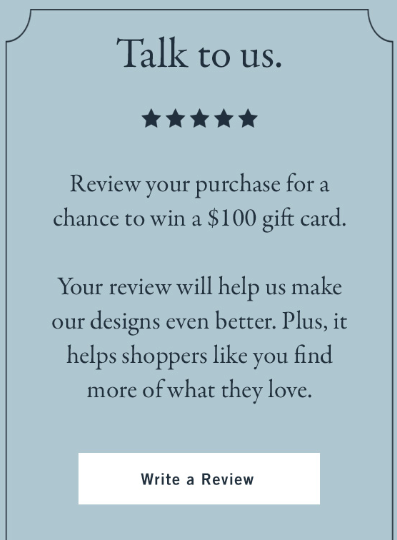
Seventy-eight percent of consumers surveyed feel that they can tell when a brand is advertising to them.
People are inundated with ads on a daily basis. Brands can’t expect stock photos to catch buyers’ interest (just look at the shift in Instagram content over the past few years). They need to show their brand in an authentic light. Sometimes, that means showcasing their products through the eyes of their happy customers.
Brands place user-generated content offline to create an authentic touchpoint with their buyers through:
- Packaging
- Signage
- Billboards
- Posters
Delta places user-generated content on their travel kit packaging that reminds flyers where they can travel with the airline. Not only does this act as advertising for Delta’s travel routes, but it also shows their focus on consumer sentiment. UGC shows that brands are in touch with their customers. Strategically, Delta makes sure to tell customers to share their photos and videos with the airline on the backside of the packaging.
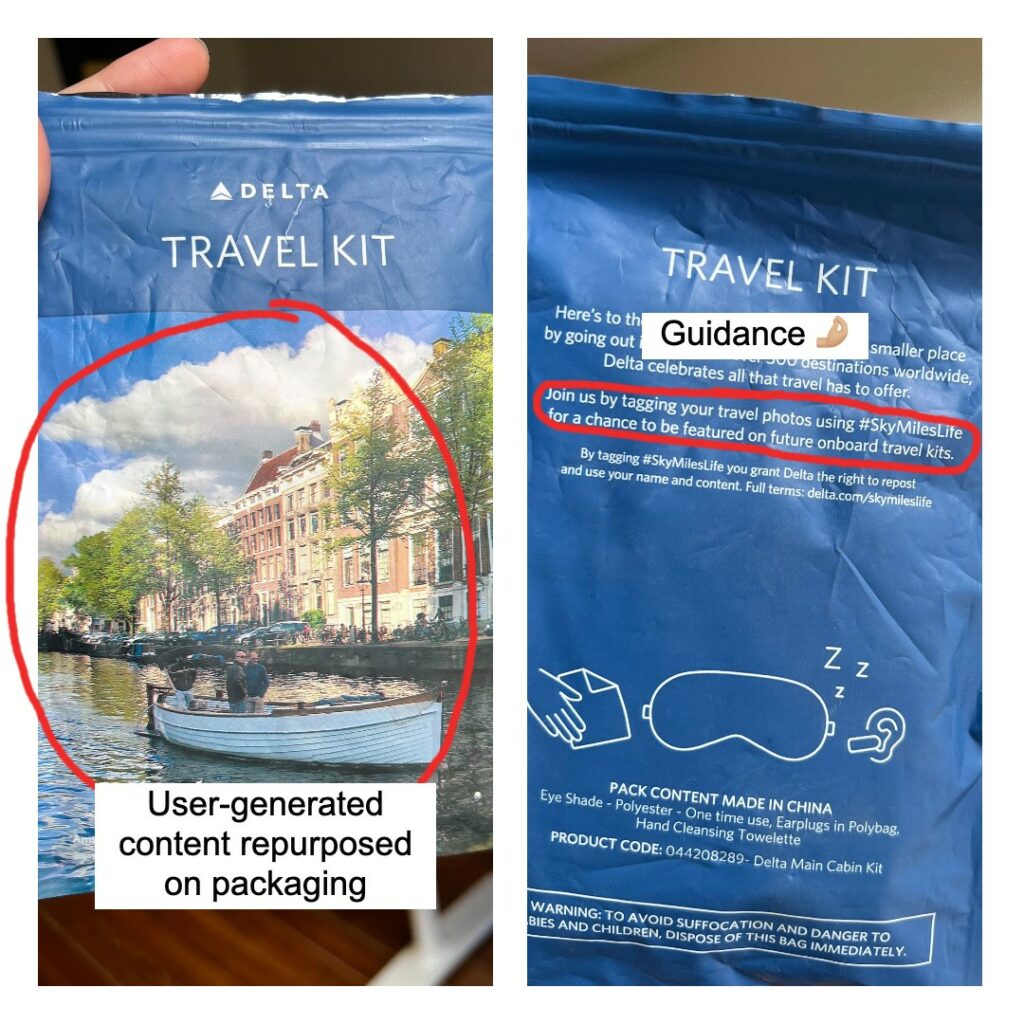
Billboards and screens
Ninety-two percent of consumers surveyed said they trust recommendations from other people (including strangers) more than the brand.
Events are an ideal opportunity to add user-generated content on-screen and engage your audience offline. With billboards and screens, you can share customer testimonials. These testimonials lead to 1) more UGC to repurpose in the future, 2) increased buyer trust through social proof, and 3) motivation from other customers to make UGC once they see their peers highlighted.
Add offline user-generated content to events through:
- Digital billboards that show customer testimonials in real-time
- Screens with user-generated content like tweets and Instagram posts
During iHeart Radio’s Wango Tango event two large screens highlighted happy crowd members. Customer selfies were displayed alongside the main stage to create a moment of delight for the concert attendees. With a tool like TINT’s UGC Studio, platforms can organize, tag, and repurpose this UGC in the future as needed.
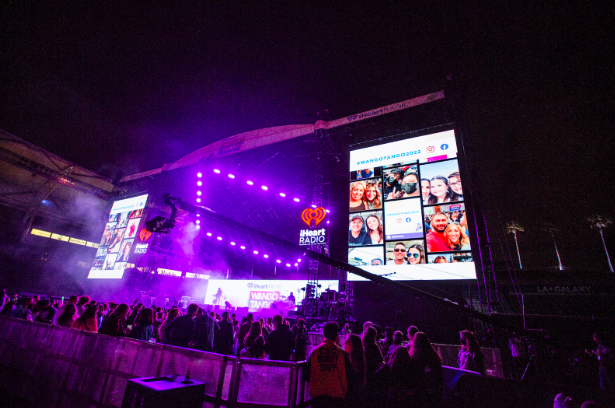
In-store
Seventy-two percent of consumers believe that reviews and testimonials submitted by customers are more credible than the brand talking about their products.
User-generated content isn’t an exclusively online experience. Brands collect UGC online but can repurpose it across their offline marketing channels, like their retail stores. Buyers have the habit of checking reviews before making a purchase, and they’d love to implement this for in-person products as well. Why not make it easier for them by adding customer content and reviews across in-store displays?
Here’s how to bring online UGC offline into your retail store:
- Take customer testimonials for specific products and place them next to the product
- Show a star rating (gathered from online data) next to products
- Tell in-person shoppers which products are the most popular
Amazon stores relied heavily on user-generated content advertising. Thanks to their huge database collection, Amazon implemented in-store user-generated content, like this customer review. By placing UGC alongside physical products, they created an online shopping experience in-person.
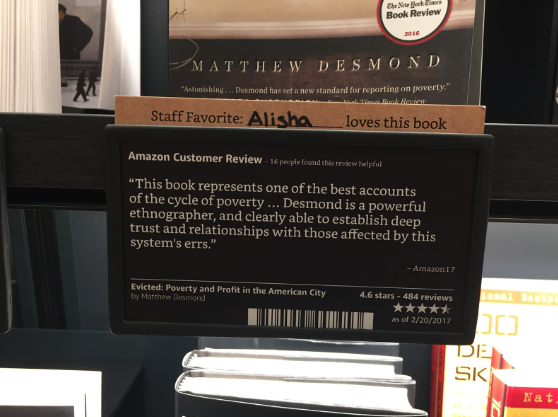
The key to a successful social commerce strategy is creating a personalized marketing experience that makes buyers think, “That’s exactly what I needed to know to feel comfortable making this purchase.”
But, how do you know when you’ve achieved this?
How to Measure Social Commerce Success
Social commerce success isn’t a cookie-cutter approach.
It depends on the channels you’re prioritizing as to which metrics of success you’ll keep an eye on. It also depends on your current business strategy—are you more focused on brand awareness or do you need to drive sales?
Metrics worth paying attention to are:
- Where are your customers creating the most high-quality UGC for your brand?
- How do your online marketing channel engagement levels change when you repurpose user-generated content vs. brand-created content?
- How did your product page conversion rates change with the addition of UGC testimonials?
How to Get Started With Social Commerce
Creating a social commerce strategy is a big task. But, it’s a compilation of lots of smaller tasks and valuable platforms that move you closer to the finish line. When done right, your user-generated content social commerce strategy will have much less friction than your brand-created content strategy.
Steps one through five of establishing a social commerce strategy are:
Step 1: Look for gaps along your customer journey and identify key touchpoints your audience will come across
Step 2: Find a way to repurpose user-generated content into those marketing channels
Step 3: Create a unique hashtag to collect creative content from customers
Step 4: Ask for permission to re-use other people’s content
Step 5: Re-share their contributions
TINT’s platform helps brands like Nike, Nestle, and LinkedIn capture, organize and repurpose user-generated content. Machine learning algorithm finds content with your products online (regardless of if users tagged you or not) and brings it all together Marie-Kondo style to make repurposing content that much easier.

Schedule a TINT demo today to see how you can add user-generated content to your marketing.

